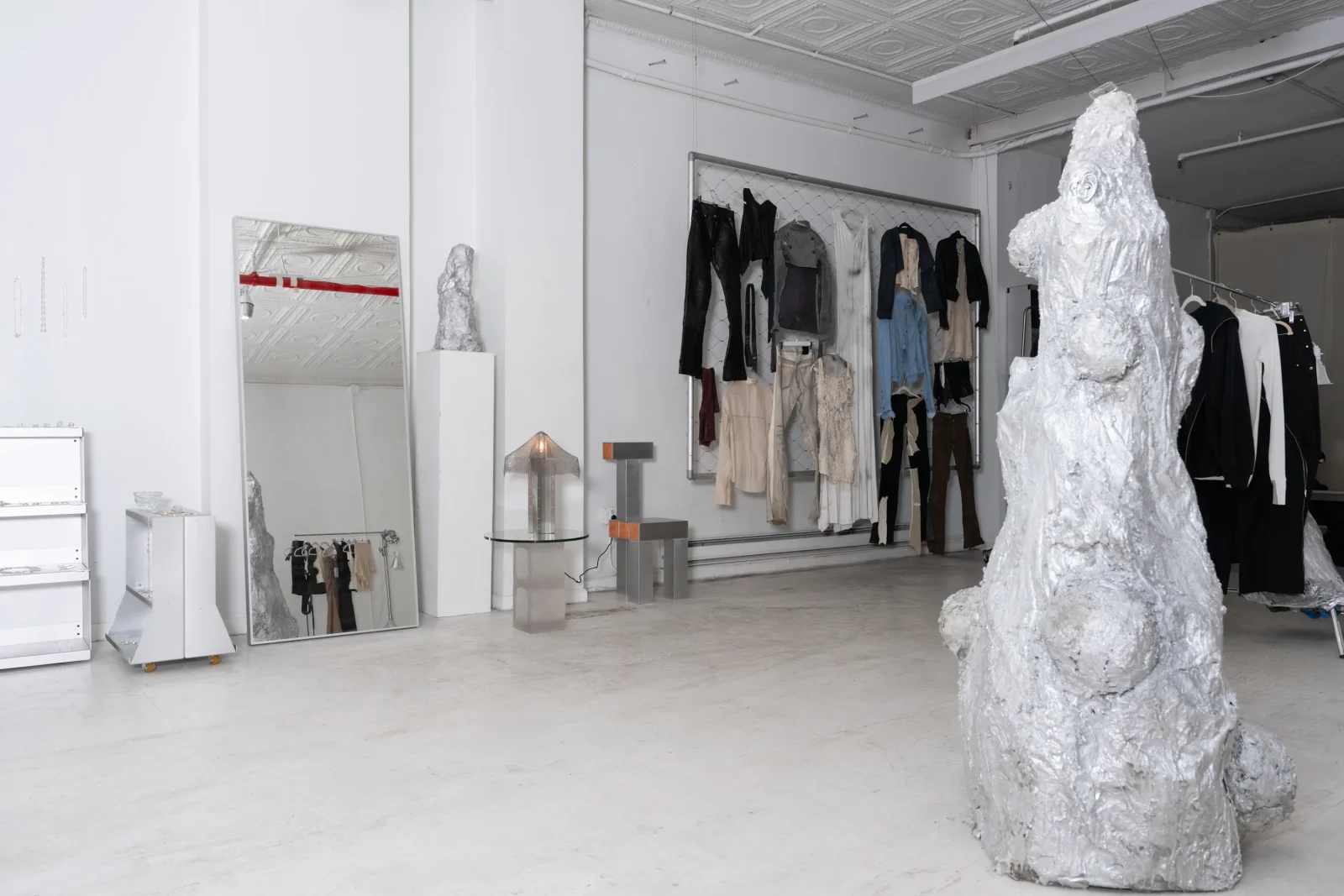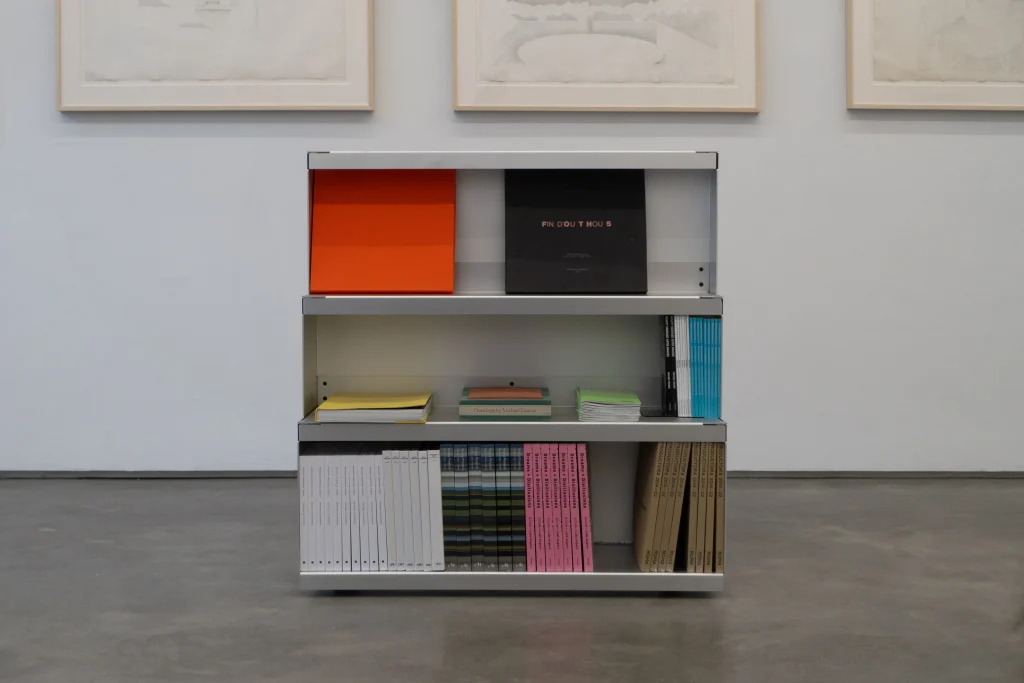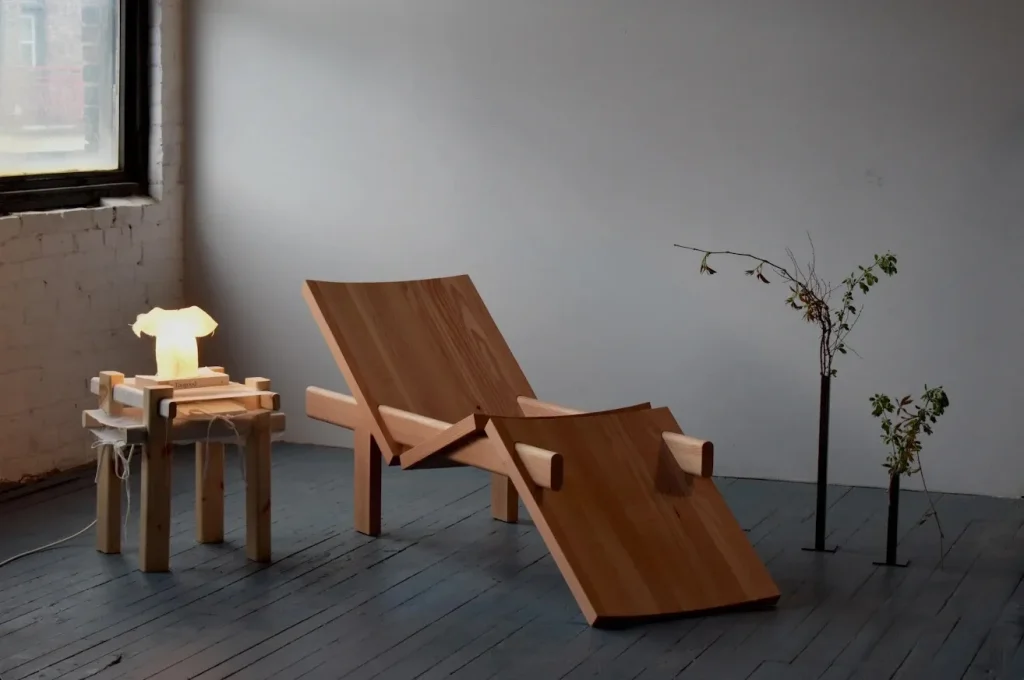
The Material Language: Connecting through Forms, Colours, & Textures A Mexican Collection Curated by Pilar Obeso & Ana Elena Mallet
“It is always refreshing to admire how designers translate the richness of ancient materials and techniques into forward-looking pieces. Tradition is timeless and all-around, and the thoughtful work of all of these designers is proof of that.”
– Ana Elena Mallet & Pilar Obeso, collection curators
View the full collection for “The Material Language”, including Ángela Damman’s “Kau” Chair
A diversity of identities, artistic movements, and approaches to creation can be found in the contemporary collectible design scene of Mexico. From centres like Mexico City and Guadalajara, a new generation of makers draw on longstanding cultural heritage and craft production centres to continue tradition and shape their own design legacies – often with a twist. They work with local artisans and master craftspeople to explore alternative methods and media, combining artisanal knowledge with a contemporary aesthetic. They experiment and innovate; create pieces which speak to all of the senses; and, as mentioned by the curators below, evidence that tradition is timeless through the past- and future-looking foundation of their practices.
In their latest collection, “The Material Language: Connecting through Forms, Colours, & Textures”, curators Ana Elena Mallet & Pilar Obeso present a selection of pieces which characterise the sense of rediscovery and reinvention at the centre of the Mexican contemporary collectible design scene. With its long and rich heritage, Mexican design has long reflected a strong respect for tradition, material, and artisan craftsmanship. Reflected in the contemporary design scene, makers are now re-approaching and diversifying materials, techniques, and forms in a way which allows them to present their own visions of Mexican design heritage. Finding a unique voice among such a well-defined scene can be challenging; however, these makers succeed in bringing attention to their practices with their innate talents and compelling styles.
This collection gives a glimpse into this moment, presenting a diversity of design identities from colourful textile to sculptural jewellery, contemporary forms to traditional handcrafts. “The Material Language: Connecting through Forms, Colours, & Textures” features work by Ángela Damman, Bi Yuu, Comité de Proyectos, CUATA, Déjate Querer, Joel Escalona, Jorge Diego Etienne, MADDA STUDIO, Maxine Álvarez, Peca, Rodete, and Taller Nacional.
Interview with collection curators Ana Elena Mallet & Pilar Obeso:
Which three words would you use to describe the contemporary Mexican design scene?
Diverse, stimulating, and clever. The ingenuity with which Mexican designers conceive a concept and experiment with such diverse materials sets off a series of objects born from shapes and textures that allow for functionality while distancing from the conventional.








Following on from your previous collections for Mexico City and Guadalajara, which focused on continued craft traditions in contemporary design, what was your curatorial approach for the creation of “The Material Language”?
For this new collection, we decided to focus on the senses. Pieces were selected considering the effect that they have on sight, touch, and, in some cases, even on hearing and smell. The evocative effects of Mexico’s well-known exciting atmosphere are no stranger to the local design scene.
“For this new collection, we decided to focus on the senses. Pieces were selected considering the effect that they have on sight, touch, and, in some cases, even on hearing and smell.”


Why have you chosen to focus on pieces which combine new, contemporary forms with traditional materials and techniques for “The Material Language”?
It is always refreshing to admire how designers translate the richness of ancient materials and techniques into forward-looking pieces. Tradition is timeless and all-around, and the thoughtful work of all of these designers is proof of that. With easy access to new materials and technology, it would be worth asking the designers why they continue to have a strong tendency for the traditional.
“The Material Language” features a glimpse into contemporary textile and jewellery design in Mexico. What has drawn you to these aspects of design?
As curators, we are excited to introduce this side of the Mexican creative landscape to Adorno. The designers showcased in this collection embody the avant-garde and experimental spirit behind Mexico’s long and rich textile and jewellery history. Their aesthetic and processes fit perfectly with the rest of the creators’ work.










You mention that the Mexican design scene, across all of its identities, is constantly reinventing itself. Looking to the future, which aspects of this diverse scene do you think will continue growing and evolving?
The essence of local materials, recovering cultural heritage, and the [re-valuing] of craftsmanship.










“The Material Language: Connecting through Forms, Colours, & Textures” is available on Adorno from 16 November 2020. An exclusive interview with curators Ana Elena Mallet & Pilar Obeso in conversation with Greta Arcila, editor-in-chief of Glocal Design Magazine (@glocal_design), will be streamed live on Adorno’s instagram, @adorno.design, on 19 November at 20.30 CEST.








Responses